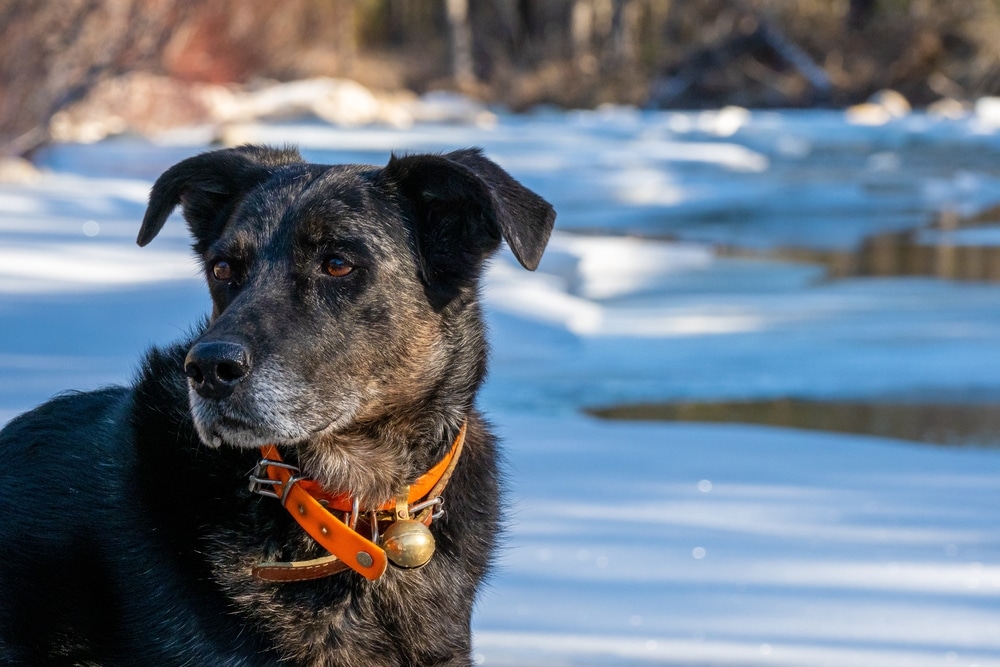Most dog owners prefer using collars with bells for their dogs. If you are planning to get one for yours, you may want to know if collars with bells are bad for dogs, or if they are good for your dog.
There haven’t been any reports of dogs having ear damage due to the usage of collars with bells, but some veterinarians suggest not using collars with bells as they are close to the dog’s ear, and ear damage is possible. Dogs might also potentially eat the bell and choke, especially smaller dogs.
Table of Contents
What Are Dog Collars?

A dog collar is a strap worn around a dog’s neck. They come in a variety of patterns, colors, and widths. Collars that are made up of nylon are one of the most popular choices among dog owners as they are durable and easy to clean
A dog can start to practice wearing a collar when it reaches 6 months of age. Best practice is that puppies younger than 6 months old should not wear collars as it might injure them if unsupervised.
Also, dogs can react differently when wearing a collar for the first time. Some dogs might enjoy wearing them, and some might not at first. Factors that might affect this are their age and breed, so make sure to observe your dog when introducing a collar.
Why Do We Use Dog Collars?
Using a collar on your dog provides help with restraint, identification, and protection. Currently, dog collars are mostly used for identification as they usually include the dog’s name, owner’s name, and address. As for dog collars being a fashion piece, a lot of dog owners enjoy styling their dog’s collars by incorporating their and their dog’s personality into them.
What Are Dog Collars With Bells?
A dog collar with bells is one of the most commonly used styles of collars for dogs (and also other companion animals, like cats!). They make high-pitched sounds when dogs move, which make them perfect accessories for dogs who love to roam around.
Why Do We Use Dog Collars With Bells?
Collars with bells help dog owners locate their dogs by following the sounds coming from the bell. They are especially useful if your dog often disappears from your sight or when they’re coming up behind you.
The Pros And Cons Of Using Bells In Dog Collars
Using collars with bells for dogs can be good for everyone. Some dog owners prefer their dogs to wear collars with bells to notify them when their dog approaches.
In addition to this, bells may also protect your dog against a predator. An example of this are reports of dog owners seeing snakes flee as they hear the dog’s bells.
Having a bell on your dog may also be good for keeping potential prey animals in your household safe. Dogs are natural hunters and have an innate instinct toward some predatory behaviors. The bell will help warn the prey animal to know your dog is approaching.
But, some veterinarians still suggest not using bells on collars for dogs as they might cause harm to your dog’s sensitive ears due to being nearby. They can also potentially swallow the bell, especially if your dog is a chewer.
Also, although this isn’t specific to collars with bells, if the collar is too tight it can lead to injuries like collapsing trachea. Or, if they’re too loose, they can slip and potentially choke your dog. These are dangers to keep in mind when getting a collar.
Key Takeaways: Are Collars With Bells Bad For Dogs?
Opinions on whether collars with bells are good or bad for dogs vary among dog owners. Some say their dog likes the sound of the bell, and others say that their dog hates it. In the end, it just depends on your dog if they are comfortable with wearing it, and you can always get a professional opinion if you’re unsure.
So, do you think collars with bells are bad for dogs? Let us know your thoughts and why in the comments below!
